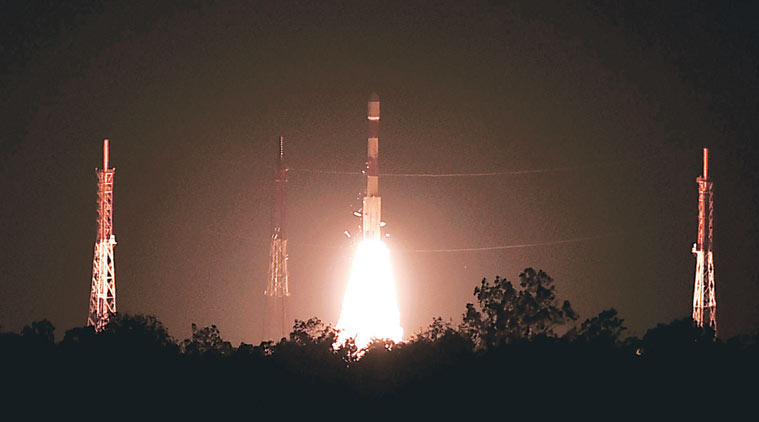- India
- International
‘Moment of immense pride and joy,’ says PM Narendra Modi after ISRO launches heaviest commercial space mission
With the overall mass of five satellites being about 1,440 kg, this launch becomes the “heaviest commercial mission” ever undertaken by ISRO and its commercial arm Antrix Corporation.
 Indian Space Research Organisation’s PSLV C 28, carrying five satellites from the UK, lifts off from Satish Dhawan Space Center in Sriharikota on Friday. (Source: PTI)
Indian Space Research Organisation’s PSLV C 28, carrying five satellites from the UK, lifts off from Satish Dhawan Space Center in Sriharikota on Friday. (Source: PTI)Heralding a new era, India on Friday night launched its heaviest commercial space mission ever with its polar rocket successfully putting five British satellites into the intended orbit after a flawless takeoff.
Prime Minister Narendra Modi tweeted congratulating the ISRO team.
Successful launch of PSLV-C28 with 5 UK satellites is a moment of immense pride & joy for India. Congratulations to the @isro team.
— Narendra Modi (@narendramodi) July 11, 2015
Indian Space Research Organisation (ISRO) workhorse 44.4 metre tall Polar Satellite Launch Vehicle PSLV-C28 — a PSLV-XL version — hurtled towards the night skies with a rich orange flame at its tail and a plume of white fume and placed the five satellites in sun synchronous orbit about 20 minutes after lift off at 9.58 pm from the Satish Dhawan Space Centre here.
“It’s been a wonderful mission. We have had an extremely successful mission,” ISRO Chairman Kiran Kumar said from the Mission Control Centre amidst resounding cheers from the assembled scientists. The life of the mission is seven years.
With the overall mass of five satellites being about 1,440 kg, this launch becomes the “heaviest commercial mission” ever undertaken by ISRO and its commercial arm Antrix Corporation.
PSLV’s 30th mission saw the launch of three identical DMC3 optical earth observation satellites, built by Surrey Satellite Technology Limited (SSTL), United Kingdom, and two auxiliary satellites. The three DMC3 satellites, each weighing 447 kg, was launched into a Sun-Synchronous Orbit (SSO) using the high-end version of PSLV-XL.
Earlier successful launches by ISRO — Mars Orbiter Mission, which was launched on November 5, 2013, and Chandrayaan-1 launched on October 22, 2008 — were with similar PSLV-XL variants.

In addition to the three DMC3 satellites, PSLV C28 also carries two auxiliary satellites from UK — CBNT-1, a technology demonstrator earth observation micro satellite built by SSTL, and De-OrbitSail, a technology demonstrator nano satellite built by Surrey Space Centre.
The satellites were launched as part of an arrangement between DMC International Imaging (DMCii), a wholly owned subsidiary of SSTL, UK and Antrix Corporation Limited. The DMC3 constellation, comprising three advanced mini satellites DMC3-1, DMC3-2 and DMC3-3, is designed to address the need for simultaneous high spatial resolution and high temporal resolution optical Earth Observation.
These satellites can image any target on the earth’s surface every day. Major application areas include surveying the resources on earth and its environment, managing urban infrastructure and monitoring disasters.
Apr 24: Latest News
- 01
- 02
- 03
- 04
- 05






























